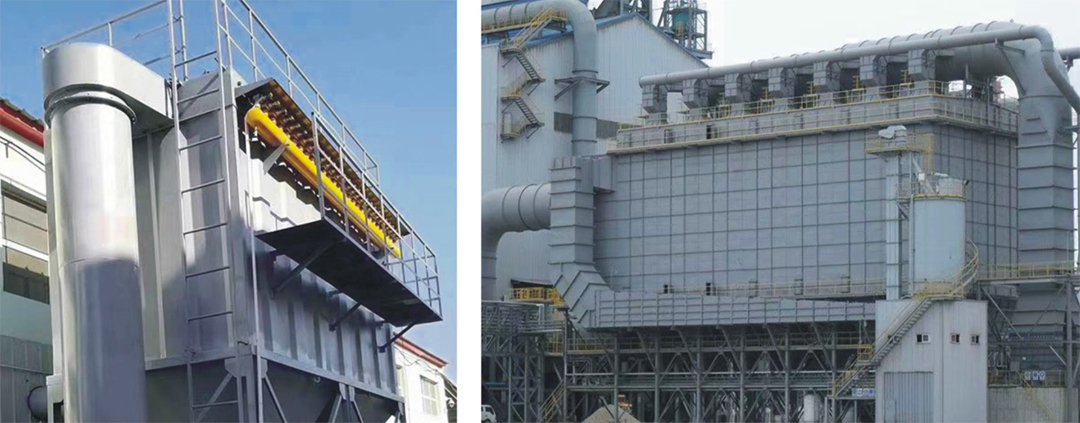 System Introduction
System Introduction
The exhaust gas enters the DRY ESP laterally through a taper designed inlet chamber and distribute gas evenly by a gas distributor.
After the exhaust gas enters a high-voltage field, electrons from the discharging electrode collide with the gas molecules and make them negatively charged. These ionized molecules balance the charge onto the positive collector plate, where they collide with particles and impose a negative charge, causing the negatively charged dust to be absorbed when it reaches the plate.
Dust adsorbed on the collector plate is collected by rapping system.
The precipitated particles fall down into collectors (hoppers) underneath the electrostatic fields. The lower part of the hopper is carried out with an electrical trace heating. From here the material will be discharged via
continuously running screw conveyors to a rotary valve. From there the dust will be blown by a pneumatic system to customer’s residue silo (batch house). In case of problems a second outlet is available to discharge dust by a rotary valve in a big bag.

 Constituent Core
Constituent Core
The distributor is carried out as U-profiles. Simultaneously precipitation of solids occurs. The distributor will be rapped together with the precipitation plates of the first high tension field.
The precipitation plates (also called collector plates) are profiled as reinforcements and each is hung up by a separate bolt on beams between the insulator boxes. The precipitation walls consist of a number of stripes in each field. Each stripe is carried out with a collecting chute to reduce risk of particle entrainment during rapping mode.
The high-tension system consists of electrode tube frames with welded-in “Bicorona” strip electrodes. The frame construction is very strong and especially designed for rapping with drop hammers from time to time. “Bicorona” electrodes produce a high actual corona for high efficiency.
The system will be rapped by drop-hammers which are located on shafts with electrical actuators. The drop-hammers hit on anvils which are fixed on gas distribution walls, precipitation walls and post-separator. The actuator of the rapping devices for the collection plates is located below on the side on the outer wall of the filter casing. The hammers arranged in an offset pattern hit on the anvils of the collection plates one after another.
The rapping of the tube frame will be operated from above by a rotary insulator and cam deflexion pulley.
While the rotation the hammers hit on the anvils.
The precipitated particles fall down into collectors (hoppers) underneath the electrostatic fields. The hoppers are inclined in an angle of approx. 55-75°, to prevent deposits as far as possible.


